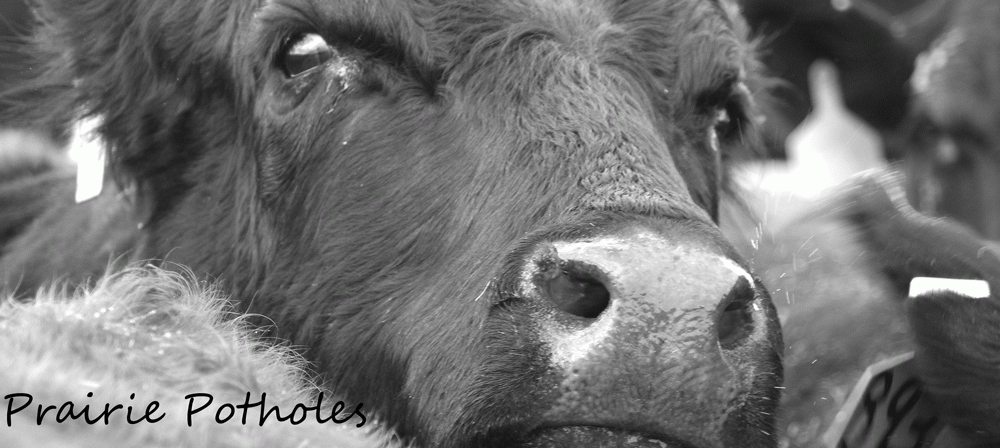Don't worry my fair-hearted liberal friends...no animals were killed in the creation of this post. Actually, no animals have ever been harmed when I join Danish Cowboy on his evening coyote calls...
Canis latrans, more commonly known as the coyote (two syllables, silent "e" at the end, please) is a common resident of the prairie. He feeds on a multitude of foods ranging in size from grasshoppers to lambs, the latter of which has made him an enigma to the modern day rancher. While we don't have sheep on our place and the coyotes generally tend to leave the newborn calves alone, Danish Cowboy was taught years ago by a friend how to call coyotes in from miles away.
You start by picking a clear evening with minimal wind, just before the sun sets. You hide the vehicle you are driving and walk amongst the hills, siting in the rifle, testing the wind, observing your surroundings, picking the perfect spot. Then you take your coyote horn which is shaped like a small megaphone with a reed and let a "Yip! Yip! Howl!" out across the calm prairie air. Then you wait.
On this particular evening, Danish Cowboy left the female half behind on a hill 200 yards to the south of the hill he chose for calling. There is a reason for this: the last time he took me coyote calling was several years ago, pre-children. I sat and waited patiently while he made his calls but then nature called and so I quietly went about the art that is known as prairie peeing and was quite abruptly told to stop and NOT MOVE. A coyote had snuck in unbeknownst to us and I'm afraid the glare of white skin may have scared him off. He blamed the failure of that calling expedition on me, but let's be honest: the Danish Cowboy coyote call is one that produces results in terms of real coyotes howling back, but not in terms of bringing an actual carcass home. But fear not! His son recently shamed him in to returning to coyote calling. So he reluctantly agreed to let the bad luck known as me accompany him on his last trip and then promptly left us behind.
Which was fine for us because my little gal is all about the self-portrait and the examining of rocks for cool specimens and not so much about patience and weird animal calls and scanning many square miles of wildness for that proverbial needle in a haystack.
So at this point on a coyote calling expedition, you are still waiting. You perhaps let out another "Yip! Yip! Howl!" on the call. If you're lucky and are well versed in coyote-speak, the animals that are out there will answer back. Listening carefully to the series of barks, howls and yips that they reply with can tell you what they know. They might be telling one another they've found food or trouble. They might merely be saying hello to see if any of their tribe is nearby. I've sat on the edge of a coulee with Danish Cowboy and his friend while they conversed with multiple animals for half an hour after the sun went down. It's not all about the kill, folks.
The winter sun expires far too early and far too fast in the middle of December and our luck ran out. No coyotes came at us this particular evening and Danish Cowboy was resigned to merely taking his gun for yet another walk in the hills.
Had a coyote or two come running in to the gentlemen that evening, my son was prepared for the detail work. At four years of age, he has perfected the squeal of a dying rabbit. Apparently this call along with a small "mouse" squeaker that probably came out of some cheap dog toy is irresistible to a coyote and will bring him running without fear towards the lair that has been set up unbeknownst to him.
I'm not at heart a hunter. I never will be. But these late afternoons spent on the hilltops, reading the world around us, are irreplaceable. You hear the coyote calls, both real and contrived, echo across the land and the silence in between is deafening. If a coyote is venturing your way, a magpie will often follow (a bird which is a rare sighting in this part of the state and a delight for me to see as I so enjoyed them when I was in Missoula). You watch the sun go down, you have time to observe your surroundings. You see traditions passed from father to son, mother to daughter. You learn about your world and it is easy to connect with it when you're talking the same language as the animals around you.









No comments:
Post a Comment